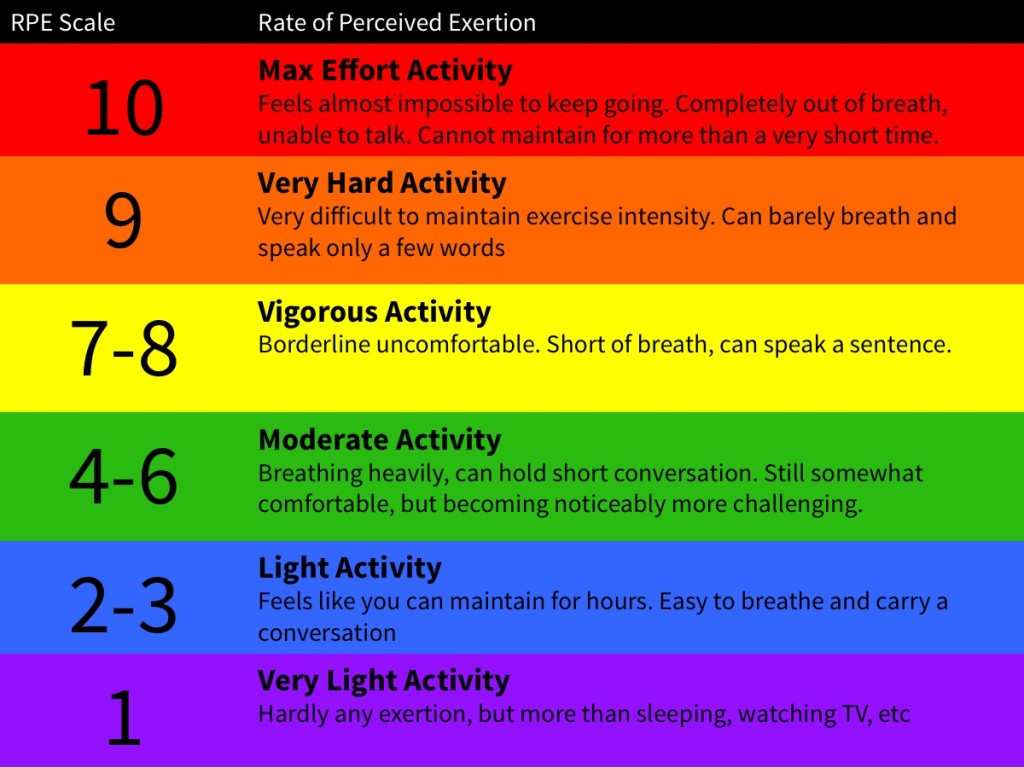|
SEARCH My Blog (Opens in new tab)
For when you need to know how many calories HIIT Yoga burnsYou know those times when we're not wearing a fitness band or an Apple Watch and wonder how many calories we're burning? Here's a simple and accurate method that you can easily do in your head. I often run or walk without any gadgets, and I rarely wear fitness bands at the gym, and never take my phone. From time-to-time, I wonder how much energy I've used in a workout. Now, I use this method, which I worked out after plotting a few charts and averaging a few numbers, and comparing to the estimates from the times when I do wear a fitness band. I will explain the one key variable that you need to know, the calculation you apply to that key variable, and why the answer makes sense metabolically. The one number that you need to knowThe one thing that you need to know is how much effort you are applying during exercise. We calculate this with a subjective "perceived exertion test". Your own perceived exertion has a good correlation with the level of intensity of your workout and your heartbeat. Do this - ask yourself how hard are you breathing and what capacity do you have to carry on a conversation? Find a number in the table below that matches your answers to those questions. (Level 10 is the intensity of "real" HIIT, which explains why most "HIIT" today is simply vigorous activity, or less....) For example, if you can hold a conversation but notice yourself breathing a little harder, then you are at level 4. If you have to stop talking and catch your breath, then you are at level 6. Here are some more examples:
Estimate your number, and hold it in your head. I'll call this your Perceived Level of Exertion (PLE). How to calculate your calories expendedFollow these steps, and having done this once it will be easier the next time:
To save time, make a mental note of your Factor Y for your most common levels of exertion. For example, for a woman:
For a man - a PLE of 2 gives a Factor Y of 3 (2 X 1.5), and a PLE of 6 gives a Factor Y of 9. Let's take an example. if you have been exercising at a PLE of 6 (quite hard) for 40 minutes, then you've expended 240 calories if a woman and 360 calories if a man. As a shortcut, for joggers, fast walkers and slow runners, you can use a distance estimate of 50 to 60 calories per kilometre. If you play with the logic above using 6 kph has a generic speed, you'll come up with this estimate. Why this calculation makes sense (metabolically)This calculation works for three reasons:
Knowing the above relationships allows us to create the easy estimation process I explained earlier. Try it, and let me know how you go. Good luck. > More posts to help you with EXERCISES > More posts to help you with DIABETES > If you are a @MEDIUM reader my publication Body Age Buster has hundreds of categorised posts which I have written especially for men and women over 50. Follow me on Quora for more health and fitness tips.
If you valued this article >> Follow me Leave a comment >> Share it >> Stay healthy If you have any questions email me and I will get back to you. Latest: get your free customised fitness plan designed uniquely for you.
|
ChoicesSince I was diagnosed at 50 with Type 2 diabetes I've been learning how to do bone-building fitness training which lowers my age. You can too. It's your choice. Walter Categories
All
Archives
May 2023
|


 RSS Feed
RSS Feed



